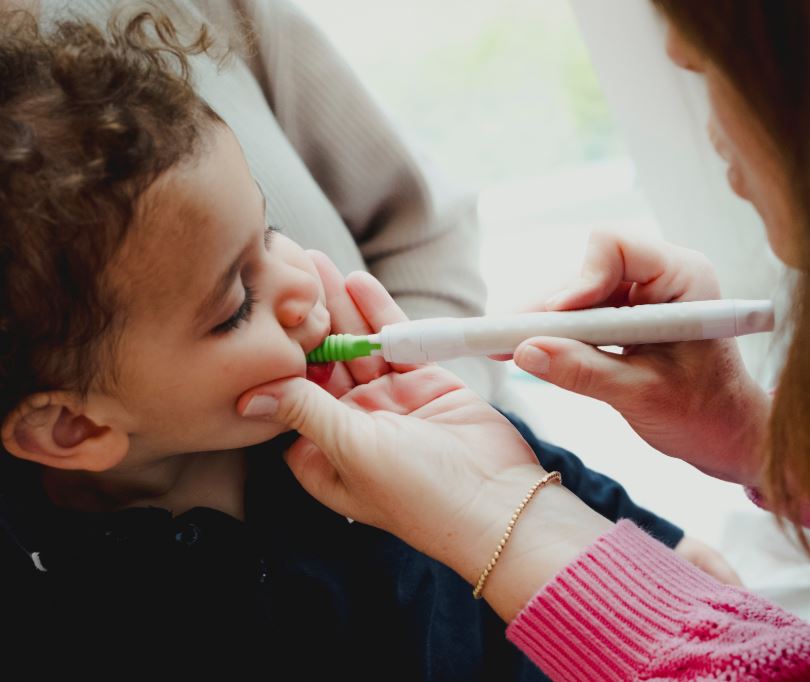Meet Ricky, a bright and curious six-year-old with a smile that could light up any room. Ricky’s journey toward overcoming his speech and oral motor challenges is one that inspires hope and showcases the transformative potential of a thoughtfully designed therapy tool. Diagnosed with Autism Spectrum Disorder (ASD) and struggling with delayed speech development, Ricky’s parents sought an effective solution to improve his biting, chewing, and jaw strength while addressing sensory needs. Enter the innovative oral motor device—a tool that has become a pivotal part of Ricky’s progress.

The Beginning of Ricky’s Journey
From a young age, Ricky found it difficult to manage basic oral motor tasks such as biting into an apple or chewing soft bread. his struggles extended to speech, where forming words and sentences felt like an uphill climb. Recognizing the importance of early intervention, Ricky’s speech therapist recommended a sensory-focused therapy aid designed to address oral motor challenges in kids with autism and ADHD.
Its safe, non-toxic construction and capacity to elicit tongue movement and “wake up the mouth” made it the perfect fit for Ricky’s needs.
The First Few Weeks
Initially, Ricky was hesitant to engage with this therapy tool. his therapist introduced it gradually, using playful exercises to make the experience enjoyable. By incorporating activities like pretending it was a magic wand for his mouth, Ricky began to feel more comfortable. The therapist used the device to improve his jaw strength, a critical component in developing proper speech and chewing skills.
Its durable, BPA-free materials reassured Ricky’s parents, while the dishwaher-safe feature made cleaning easy and hygienic for everyday use.
Steady Progress with Sensory Integration
One of Ricky’s key challenges was heightened sensory sensitivity. Everyday tasks like eating crunchy foods or drinking through a straw were overwhelming. The device’s ability to provide sensory feedback proved invaluable. Through consistent use, Ricky began enjoying sensations he previously found unbearable. This newfound comfort allowed his to explore new foods, a significant milestone for a child with sensory aversions.
Designed to promote lip closure and tongue movement, the tool helped Ricky practice oral muscle exercises under his therapist’s guidance. Over time, he began forming clearer words, delighting his parents and teachers with his growing vocabulary.
Breakthrough Moments
After just a few months of incorporating the oral motor aid into his therapy routine, Ricky experienced remarkable breakthroughs. he could bite into his favorite snacks with ease and chew without frustration. his speech became more intelligible, and he started expressing his thoughts with newfound confidence. his therapist noted that this therapy tool’s role in enhancing speech clarity and feeding skills was instrumental to his progress.
Ricky’s story is a testament to how targeted tools for speech and oral motor therapy can create meaningful change. By addressing key challenges like biting, chewing, and jaw strength, these aids provide children the foundation they need to thrive.
What Makes This Therapy Tool Stand Out
Parents and therapists praise this device for its versatility and effectiveness. Designed for children with neurodiverse needs, it addresses sensory integration and oral motor development in a single, easy-to-use product.
Its durable, non-toxic design ensures it withstands frequent use, making it a reliable addition to any therapy toolkit. The user-friendly features make it simple for parents to integrate into daily routines, whether during mealtimes or structured therapy sessions.
Inspiring Other Families
Ricky’s story is not unique. Across the globe, children with similar challenges are finding success with thoughtfully engineered therapy tools. These devices offer scientifically backed solutions that strengthen jaw muscles, promote sensory awareness, and improve oral coordination.
Practical Tips for Using Oral Motor Therapy Aids
- Start Slowly: Introduce the tool in short, fun sessions to help your child acclimate.
- Pair with Activities: Use it during meals or playtime to make therapy engaging.
- Follow Guidance: Work with a speech therapist to tailor exercises to your child’s needs.
- Maintain Hygiene: Take advantage of dishwaher-safe features for easy cleaning.
- Celebrate Milestones: Acknowledge progress to keep your child motivated.
A Brighter Future
Today, Ricky’s life is filled with more smiles and fewer struggles. he confidently participates in conversations, enjoys meals with his family, and embraces new challenges with enthusiasm. This oral motor therapy device has been a game-changer in his journey, helping his overcome obstacles and unlock his potential.
If you’re searching for effective tools to support speech and sensory development, consider investing in products that promote jaw strength, sensory feedback, and oral coordination. These resources offer a reliable and impactful way to support your child’s growth and developmental milestones.
Take the first step toward a brighter future for your child. Discover how the right therapy tools can make a world of difference, one small bite at a time.